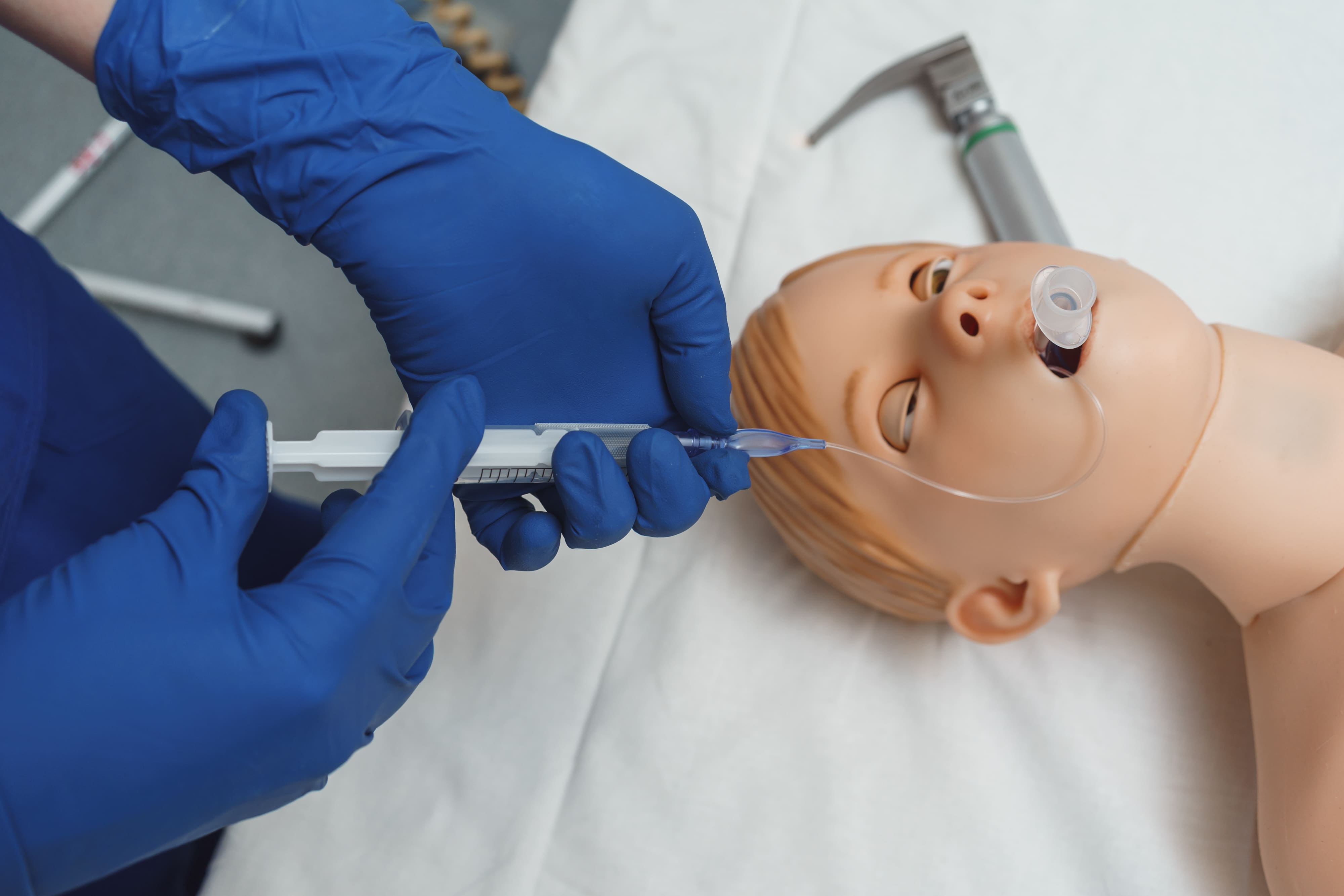
Arthur
Perfect simulator for Paediatric patient care

Perfect simulator for Paediatric patient care
When caring for a young child, communication skills are as critical as the technical skills required to manage paediatric emergencies. Arthur has been designed to support those working in child health to effectively communicate, assess, diagnose and treat young patients in a diverse range of critical scenarios and in a variety of clinical settings. Arthur simulates to a wide range of conditions, and provides meaningful learning experiences through his extensive range of features, from a healthy, talking child to being unresponsive with no vital signs.

Pulse palpation
SPO₂ monitoring
Independent pupillary light reflex
Intravenous injections with automatic drugs recognition (preinstalled catheter)
Intraosseous access (tibia, bilateral)
Anatomically accurate landmarks
Intubation procesure
Use real instruments
Anatomically accurate upper airway
Orotracheal and nasotracheal intubation
Head tilt, chin lift, jaw thrust
Laryngeal mask airway insertion
Pneumothorax
Sellick manoeuvre
Positive pressure ventilation
Programmable airway resistance
Pharyngeal airflow obstruction
Esophageal intubation
BVM ventilation
Cyanosis and acrocyanosis
Bilateral chest rise and fall
Programmable bilateral bronchi resistance
Intubation depth detection and logging
Tongue edema
Laryngospasm
Spontaneous breathing
Programmable respiratory complications
Programmable respiratory rate
Respiratory rate synced to patient monitor vital signs
Programmable chest rise and fall
Mechanical ventilation (PCV and VCV) PEEP (up to 40 cm H2O)
Variable bronchi resistance
Audible needle decompression with realistic feedback
Auscultation of heart sounds (5 points), lung anterior sounds (5 points), lung posterior sounds (4 points), bowel sounds (4 points)
Independent normal/abnormal heart sounds
Independent normal/abnormal lung sounds
Normal/abnormal bowel sounds
Auscultation of Korotkoff sounds
Programmable bilateral chest rise and fall, synced with breathing
Tonic and clonic seizures
Programmable blinking rate
Programmable unequal pupil sizes (anisocoria)
Rich library of ECG rhythms
ECG heart rate of 20 to 200 bpm
Real ECG electrodes
Anatomically accurate landmarks to position your hands for chest compressions
Chest compressions
Defibrillation, cardioversion and cardiac pacing using real devices
Defibrillator pads correct placement and logging
Defibrillation in manual and automatic modes
Successful compressions with their logging and effect on HR and ECG
Cyanosis
Programmable pulse strength
Realistic chest compressions
Automatic activity log, displaying all user actions
Depth, frequency, hands placement assessment and log
Ventilation volume
Manual configuration of CPR protocols
Printable detailed CPR assessment
Rich library of vocal sounds (moaning, coughing, pre-recorded words and phrases)
Use of a microphone to transmit information through the simulator
Realistic teeth, soft cheeks and gums
Pre-installed themes, scenarios, programs and the Scenario Constructor software to design your own scenario
Realistic bone structure, palpable ribs, kneecaps and many more
Arthur will assess all of your actions during resuscitation and then provide detailed feedback. Powerful and intuitive, a perfect symbiosis of hardware and software: access our ever-expanding library of clinical cases or create your own.